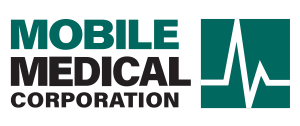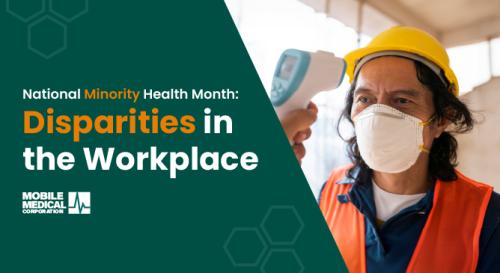Every April, National Minority Health Month spotlights the ongoing health disparities affecting racial and ethnic minority populations. This observance is not just a call to awareness but a call to action, urging us to address the inequities in our healthcare system and beyond. Among the most pressing issues is the significant gap in healthcare outcomes for minorities, particularly those working in high-risk occupations.
These workers often face a double burden: they are disproportionately represented in industries where exposure to hazards is a daily reality, and they simultaneously grapple with barriers to accessing the healthcare they need. The health risks associated with these professions are compounded by systemic challenges, including limited access to preventive care, language barriers, and a lack of workplace protections.
In this blog, we will examine the barriers that contribute to unequal health outcomes, and discuss actionable steps that can be taken by policymakers, employers, and communities to foster a safer, healthier workforce.
Understanding Occupational Health Disparities
When we talk about healthcare disparities, we're referring to the unequal health outcomes and access to medical care that different groups experience. These disparities are particularly pronounced among minority populations, and they are often a result of complex societal and economic factors. Such disparities can mean the difference between a safe work environment and one that poses significant risks to a worker's well-being.
Health Outcomes in the Workplace: A Closer Look
Statistics from various health and labor organizations reveal that minorities often face higher rates of workplace injuries and illnesses. For example, according to the U.S. Bureau of Labor Statistics, the rate of work-related injuries and illnesses among Hispanic or Latino workers is notably higher than the national average. This is a concerning trend, especially when considering that these groups are frequently found in some of the more hazardous industries, such as demolition, mining, and chemical production.
The factors contributing to these healthcare disparities are deeply rooted in social and economic conditions. Socioeconomic status, for instance, can limit a worker's ability to afford health insurance or take time off to recover from an injury. Access to health resources is another critical barrier; without proper medical facilities or preventative care, conditions that could be treated with early intervention become major health crises.
Language barriers present another significant challenge. Non-English speaking workers may not fully understand safety protocols or may be hesitant to seek help when they need it due to communication difficulties. This can lead to preventable accidents or the worsening of health conditions that go unreported.
The Impact of Workplace Hazards on Minority Health

In light of National Minority Health Month, we must first acknowledge that workplace risk is an unfortunate reality in many industries. These hazards each come with their own set of consequences for workers, including:
- Chemical Hazards: Chemicals in the workplace (ranging from cleaning agents to industrial solvents) pose serious health risks. Workers can be exposed through inhalation, skin contact, or ingestion, leading to acute or chronic health issues such as respiratory problems, skin irritation, and cancer.
- Physical Hazards: Physical hazards include excessive noise, vibration, radiation, or extreme temperatures. These conditions often lead to hearing loss, musculoskeletal disorders, and other related injuries.
- Biological Hazards: Biological hazards stem from working with people, animals, or infectious plant materials. Workers in healthcare, laboratory, and agricultural settings might be exposed to bacteria, viruses, and fungi, risking infections and illnesses.
- Ergonomic Hazards: Ergonomic hazards arise from improper workstation design, repetitive motion, or awkward postures. Over time, this can result in conditions like carpal tunnel syndrome or chronic back pain.
- Psychosocial Hazards: Psychosocial hazards include workplace stress, violence, and harassment. The resulting environment induces mental health issues such as anxiety and depression, which can be just as debilitating as physical injuries.
The long-term consequences of exposure to workplace hazards can be devastating for minority communities. Chronic health conditions contribute to lost workdays, decreased productivity, and even early mortality. Moreover, the financial burden of medical treatment can have a ripple effect, impacting the economic stability and overall well-being of entire families.
Barriers to Healthcare in the Workforce
Achieving equal healthcare for all workers is the ultimate goal. Here, the challenge lies in addressing and overcoming the specific barriers that impact minority health goals.
Lack of Appropriate Safety Training and Equipment
Safety training and equipment are the first lines of defense against workplace hazards. Unfortunately, minority workers often receive inadequate safety training, which may be rushed, incomplete, or absent altogether. Additionally, they may not be provided with the necessary personal protective equipment (PPE) or may receive gear that is ill-fitting or poorly maintained, rendering it ineffective.
Inadequate Access to Health Insurance and Medical Care
Health insurance is a critical factor in accessing healthcare services. Minority workers are more likely to be uninsured or underinsured compared to non-minority populations. This lack of insurance (coupled with the high cost of medical care) means that many workers forgo necessary treatments or delay seeking help until their conditions become severe.
Cultural and Linguistic Barriers
Cultural barriers can significantly hinder a worker's ability to understand and comply with safety regulations. When instructions are not provided in a worker's primary language or when they fail to consider cultural practices, the risk of accidents and health issues increases. These barriers also affect the ability of workers to seek medical care and advocate for their health and safety needs.
Discrimination and Bias
Discrimination within workforce safety systems further complicates disparities. Minority workers may encounter prejudice from healthcare providers or safety inspectors, leading to a lack of trust and reluctance to report issues. This discrimination can manifest in subtle ways, such as a provider dismissing a worker's concerns, or more overtly, through unequal treatment based on race or ethnicity.
Strategies for Improving Minority Health in the Workplace

The health disparities faced by minority workers are not only a matter of workplace safety but also of public health and social justice. To reinvent minority wellness in the workplace, a multifaceted approach is necessary, involving a combination of policy changes, employer health initiatives, community action, and healthcare provider involvement.
Policy Recommendations
The government plays a pivotal role in enacting and enforcing stricter safety regulations that protect all workers, regardless of their background. This includes regular inspections and penalties for non-compliance. Additionally, targeted health education programs can be developed to address the specific needs of minority workers, ensuring they know how to protect themselves and their rights in the workplace.
Employer Responsibilities
Employers must take responsibility for the health and safety of their employees, creating a working environment that aids in the prevention of occupational diseases. This involves providing culturally competent training that is accessible to workers of all backgrounds, including those who may not speak English as a first language. Employers should ensure that all workers have access to the appropriate PPE and that all equipment is up to code.
On-site Health Initiatives
On-site health clinics and on-site medical services provide a proactive approach to improving the health of workers, including minorities who may face barriers to accessing traditional healthcare. These clinics provide convenient access to medical care directly within the workplace, reducing the need for employees to take time off to visit off-site healthcare providers. For minority workers who might otherwise struggle with a lack of transportation, inflexible work schedules, or fear of lost wages, on-site clinics offer a critical lifeline.
These services can range from basic first aid and health screenings to more comprehensive care, including occupational clinicians and minority mental health resources. By bringing healthcare to the workplace, on-site health services help to identify and address health issues early, providing ongoing monitoring for workers with existing health conditions. This not only contributes to better health outcomes but also fosters a culture of employee wellness that benefits the business as a whole – throughout National Minority Health Month and beyond.
Changes in Workplace Health Policies
In the pursuit of workplace equality and safety, policymakers have been instrumental in enacting changes that aim to reduce health disparities among minority workers. One of the most significant pieces of proposed legislation in this area is the Protecting America's Workers Act. This act is designed to strengthen the Occupational Safety and Health Act of 1970 by broadening the coverage to include public sector employees, who were previously excluded from many of its protections.
The act also proposes to enhance the rights of whistleblowers, increase penalties for employers who fail to meet safety standards and improve the tracking of workplace injuries and illnesses. By holding employers more accountable, the act aims to create a safer and more just working environment for everyone.
Making Healthcare Accessible to All
This National Minority Health Month, we're here to help you take the next step in employee welfare. Our on-site health and safety programs are tailored to your industry, ensuring that all employees receive comprehensive care that meets their needs. Get in touch with a MobMed representative today!



